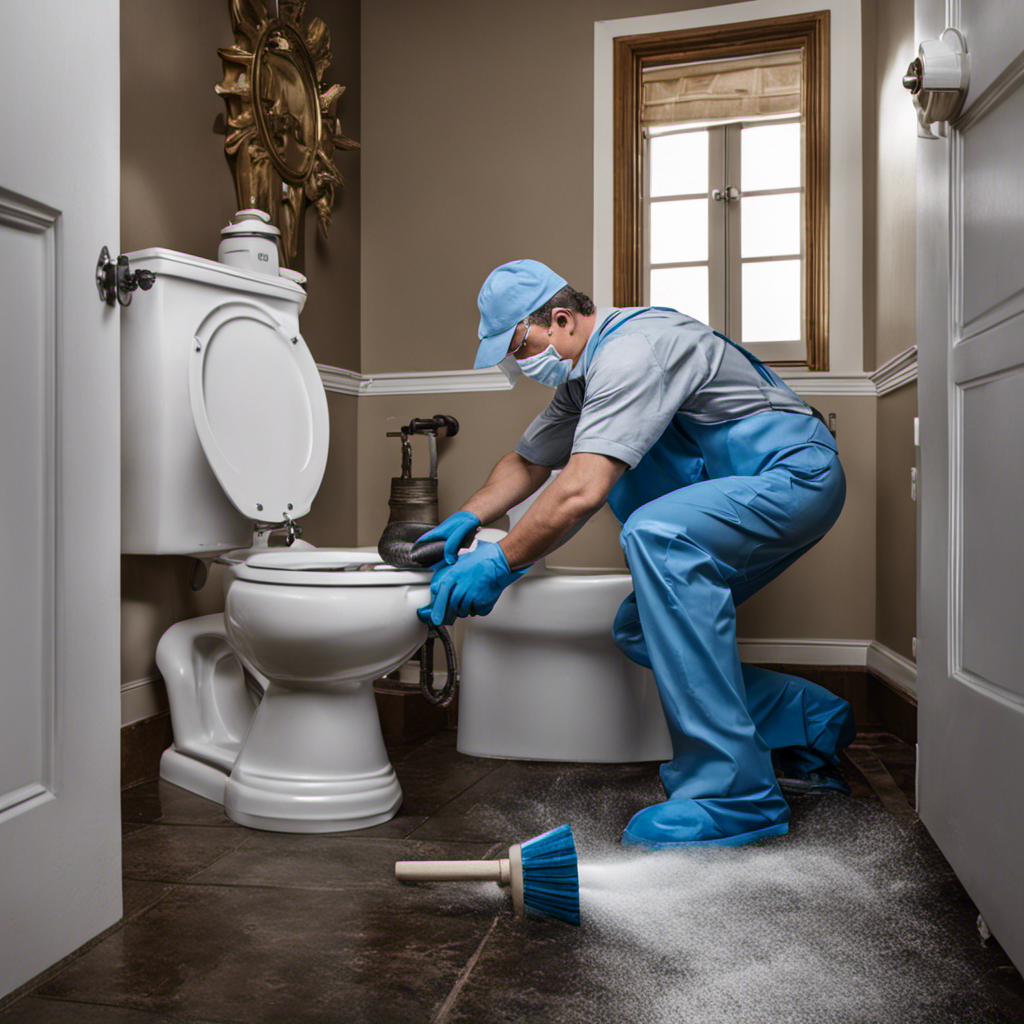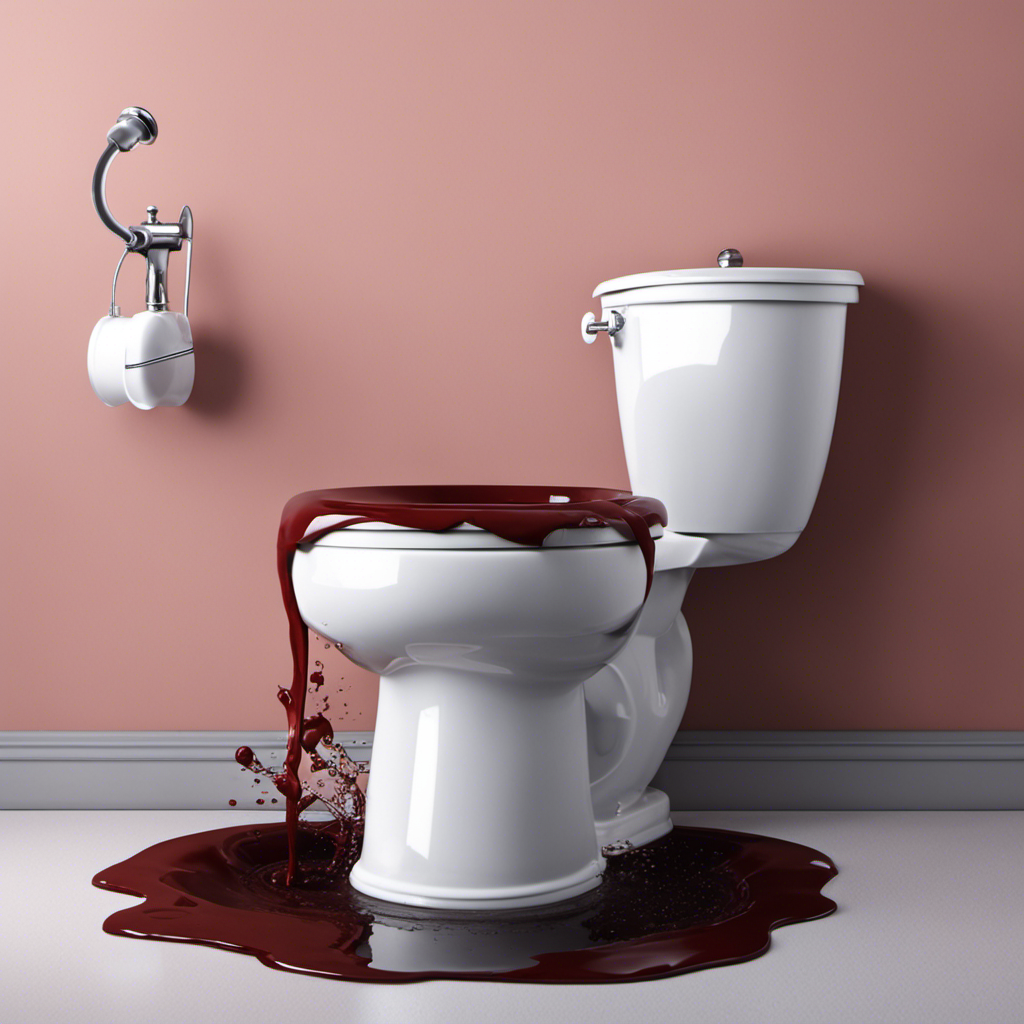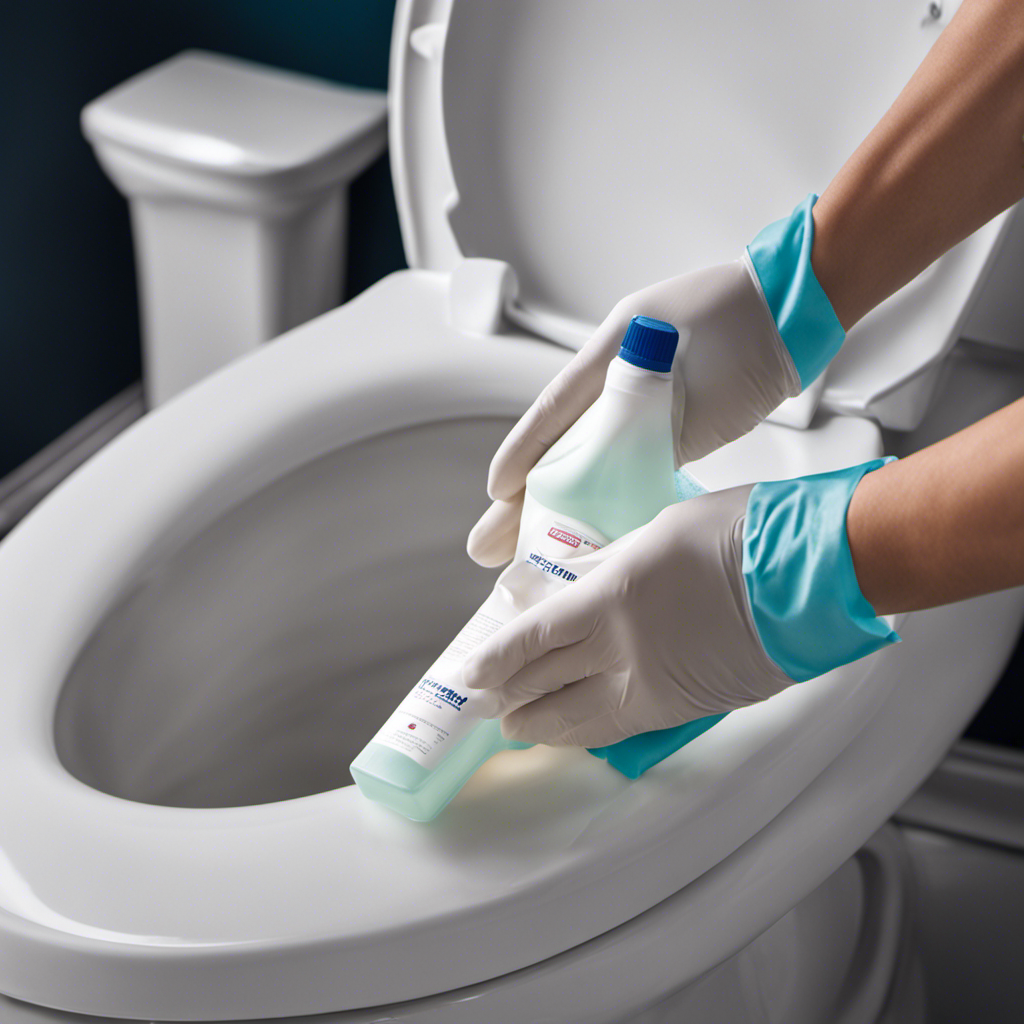Are you tired of dealing with a clogged toilet that’s filled to the brim? Well, don’t panic just yet! In this article, we’ll show you how to unclog a toilet that is full of water using simple techniques and common household tools.
You’ll be amazed at how easily you can restore your toilet’s functionality and avoid costly plumbing bills. So, grab your plunger and get ready to tackle this pesky problem head-on.
Key Takeaways
- Assess the blockage by diagnosing the problem and observing water level and drainage.
- Use unclogging techniques such as using a plunger, DIY remedies, or a baking soda and vinegar mixture.
- Practice prevention and maintenance tips like regularly cleaning the toilet and being mindful of what is being flushed.
- Consider calling a professional if attempts to unclog the toilet are unsuccessful or if there are signs of a serious blockage.
Tools You’ll Need
You’ll need a plunger and a bucket to unclog the toilet. When it comes to common toilet problems, clogged toilets are at the top of the list. Troubleshooting toilet issues can be frustrating, but with the right tools, you can easily resolve the problem.
The plunger is an essential tool for unclogging a toilet. It creates pressure and suction to dislodge the blockage. Make sure you have a good quality plunger with a rubber cup that fits tightly over the drain.
Additionally, a bucket is necessary for containing any overflow or excess water. It helps prevent a messy situation and allows you to assess the blockage more effectively.
Now that you have the necessary tools, let’s move on to assessing the blockage and finding the best solution.
Assessing the Blockage
Before assessing the blockage, it’s important to take safety precautions.
Diagnosing the problem with your clogged toilet can be done through a series of troubleshooting methods.
Start by flushing the toilet and observing the water level. If it rises close to the rim and drains slowly, you likely have a partial blockage. If the water doesn’t drain at all or drains very slowly, there may be a complete blockage.
Another method is using a toilet auger to determine the location of the blockage. Insert the auger into the drain hole and rotate it clockwise until you feel resistance. This could indicate the presence of the blockage.
Unclogging Techniques
To effectively clear the blockage, try using a plunger to create pressure and dislodge any debris in the drain.
Here are some DIY remedies you can try to unclog your toilet:
-
Plunger: Use a flange plunger specifically designed for toilets. Position it over the drain hole and firmly push down, then pull up quickly to create suction and pressure.
-
Hot water and dish soap: Pour a generous amount of dish soap into the toilet bowl, followed by hot water. Let it sit for a few minutes before attempting to flush.
-
Baking soda and vinegar: Mix 1 cup of baking soda with 2 cups of vinegar. Pour the mixture into the toilet bowl and let it sit for about 30 minutes. Flush with hot water.
By following these DIY remedies, you can often unclog a toilet without the need for professional help. However, if the blockage persists, it may be best to consult a plumber.
Now, let’s move on to prevention and maintenance tips to avoid future clogs.
Prevention and Maintenance Tips
Regularly cleaning the toilet bowl and drain pipes can help prevent future clogs. This is because regular maintenance is crucial to keep your toilet functioning properly and avoid inconvenient and messy clogs.
One of the main causes of toilet clogs is the accumulation of debris, such as toilet paper, hair, or foreign objects, in the drain pipes. These materials can build up over time, causing blockages and preventing proper water flow.
By cleaning the toilet bowl regularly, you can remove any residue or build-up that could potentially lead to clogs. Additionally, it is important to be mindful of what you flush down the toilet, as flushing items like baby wipes, feminine products, or excessive amounts of toilet paper can also cause clogs.
When to Call a Professional
If you’re experiencing persistent issues with your toilet, it might be time to consider calling a professional plumber for assistance. While some toilet blockages can be resolved with simple DIY methods, there are certain signs that indicate a more serious problem that requires expert attention.
Here are some signs of a serious toilet blockage:
- Multiple attempts to unclog the toilet have been unsuccessful.
- The water level in the toilet bowl is rising significantly.
- There is a foul odor coming from the toilet.
When it comes to resolving a serious toilet blockage, there are pros and cons to both hiring a plumber and attempting a DIY fix. Here are some factors to consider:
Plumbers:
- They have the necessary expertise and equipment to tackle complex blockages.
- They can identify and fix underlying issues that may be causing the blockage.
- They offer a guarantee for their work.
DIY:
- It can be a cost-effective option for minor blockages.
- It allows for immediate action without having to wait for a professional.
- It can be a learning experience for future maintenance.
Ultimately, the decision of whether to call a professional plumber or attempt a DIY fix depends on the severity of the blockage and your comfort level with tackling the issue yourself.
Conclusion
In conclusion, now you possess the necessary know-how to tackle a clogged toilet like a seasoned plumber. By following the steps outlined, armed with a plunger and perhaps a trusty toilet auger, you can conquer any blockage with ease.
Remember, prevention is key, so be mindful of what you flush down the toilet. But fear not, in the rare event that your efforts prove futile, don’t hesitate to call in the experts. They’ll swoop in like superheroes to save the day.
Happy unclogging!










